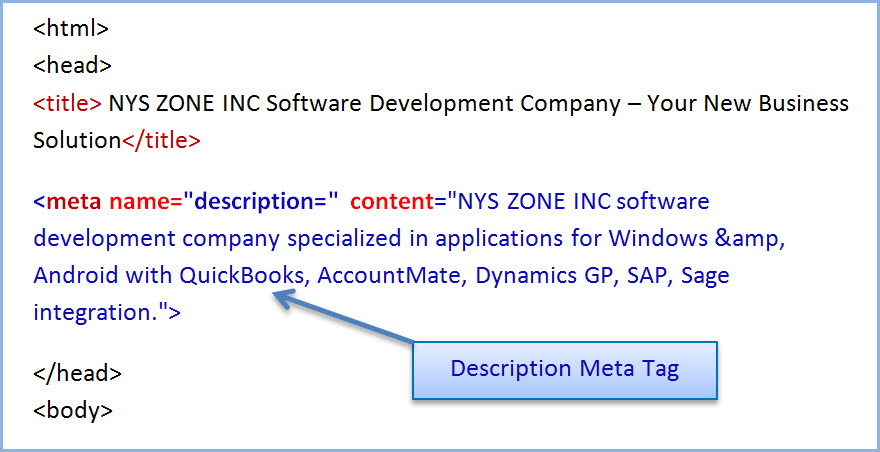Below the page URL in any search result, we see a snippet, or in other words, a short description of the webpage. This naturally raises the question, “Where does a snippet come from?”
In March 2012, Google was granted a patent that provides some hints about where Google might choose the text for snippets, “The snippet may be generated based on the type of query or the location of the query terms in the document. Different snippet generation algorithms may be used depending on the query type. Alternatively, snippets may be generated based on an analysis of the location of the query terms in the document.”1
So, we only know that a snippet might come from many different places on the webpage. Google tells that it tries to find parts of the page content that best match the keywords a user searched for and shows this part in the search result. It uses a number of different sources for this information, including information in the Title and description Meta tags for each page.
The description Meta tag, like the Title tag, should be placed within the Head tag of the HTML document.

The merit of the description Meta tag is it gives Google and other search engines a summary of what the current page is about and might be used as a snippet for this page in search results. So, the description Meta tags play an important role in search engine optimization, and if you want to improve your website presence in search results you should optimize your description Meta tags.
The description Meta tag provides “both search engines and users with a summary of what your page is about” 2
Identical page descriptions are not helpful for search engines. Google uses a number of different strategies for selecting snippets, but when it is available, Google frequently prefers to display the page’s Meta description as a text preview because it gives users a concise explanation of the URL's content. In the case of similar and, moreover, identical description Meta tags, Google and other search engines need to find another part of the page content that accurately represents the individual page that appeared in the web results.
Avoid using a single description Meta tag across all or a large group of your website’s pages.
A short paragraph that is included in the page description Meta tag gives you the opportunity to advertise your page content to searchers and let users know whether the given page contains the information they are searching for.
“Write a description that would both inform and interest users if they saw your description meta tag as a snippet in a search result.” 2 Moreover, “create descriptions that accurately describe each specific page. Use site-level descriptions on the main home page or other aggregation pages, and consider using page-level descriptions everywhere else.” 4
Avoid using:
“A page’s description Meta tag might be a sentence or two, or a short paragraph.” 2 But, it is not necessary to have your descriptions in the sentence format only. For instance, you can include the structured data in your description Meta tags such as:
Avoid:
A keyword in the description <meta> tag is an additional signal of relevancy to the current page to the search term. The page’s relevance to the user’s search query is very important for the webpage’s ranking on Google. Google may use your description Meta tag amongst many other signals to classify pages and display information about a page in the search result. Google will ignore the page’s Meta description if the keyword is not also present on this page. If you want your Meta description to appear as the snippet in the search result, place your keyword in the Meta description and remember that the same keyword needs to be on the page too.
1. “Generation of document snippets based on queries and search results” Patents. 27 March 2012. 7 June 2015. <http://www.google.com/patents/US8145617>
2. "Google Search Central. SEO Starter Guide" <https://developers.google.com/search/docs/beginner/seo-starter-guide>
3. “HTML Tag” w3schools.com. 1999-2015. 7 June 2015. <http://www.w3schools.com/tags/tag_meta.asp>
4. “Review your page titles and snippets” Search Console Help. 2015. 7 July 2015. <https://support.google.com/webmasters/answer/35624?hl=en&rd=1>
5. “Meta Description” MOZ. 2015.7 July 2015. <https://moz.com/learn/seo/meta-description>